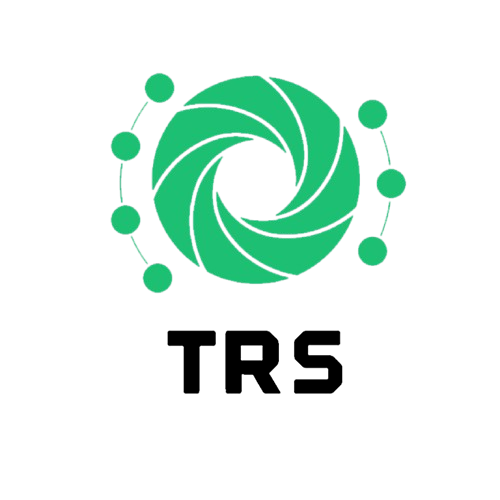Data science is evolving at a fast pace. There are numerous tools available in the market that are developed to help data scientists with their work. With evolving trends, some become outdated with no possible benefit in the current scenario. With further advancements in the tech sector, these tools are experiencing rapid growth. What worked in the past year might not work in 2025. It becomes essential to stay updated with the relevant tools in order to stay competitive.
Let us look at the top 10 information technology datasets that every data scientist should know to stay ahead in the data science world.
You may have heard of the phrase “Cloud Computing Essentials Unlock Benefits” since it is more than just a trend in today’s growing digital world. Whether you just have started a business or have an established one, cloud computing has become a great source of innovation, growth, as well as everlasting success.
In this blog, we will study what is cloud computing and its important elements. We will also explore how cloud computing enables a new idea in automation and innovation.
1. SQL
SQL is a language widely used for manipulating data. This language is primarily used for analyzing data. Popular among data science professionals, the language is considered a crucial tool for data analysis. SQL, being a decade old, remains relevant in the current year, thanks to its constant updates. It is widely used by data scientists who manage data. With this as a data tool, it becomes easy to get data from databases. This enables professionals to structure complex data that can further assist in data analysis. It also aids professionals in identifying patterns within the data.
2. Python
Python is considered the most popular language in data science. It is simple to use, which is why it is liked by experts and beginners. It is also a preferred choice for various tasks, so its popularity goes beyond just being a simple language. With the advent of AI assistants, their popularity continues to grow. Companies often use other tools with Python and report that it enhances efficiency compared to those who rely solely on Python. They report they are getting better results by using it with different tools. Python makes it far easier to manipulate data. It can also be used for data visualization. The tool is also popular among workers outside the data science domain. They are often attracted to it for its easy nature.
3. MATLAB
MATLAB is another programming tool designed for data analysis. It features several tools that aid in various data science tasks. It is an excellent technology in data science. It is mainly used to create compelling data visualizations. It enables data scientists to gain a deeper understanding of complex insights. MATLAB can also be used to build machine learning algorithms. Image analysis can also be done easily with MATLAB. It facilitates feature extraction along with object recognition tasks with high accuracy.
4. Apache Spark
Apache Spark remains essential in 2025 for working with big datasets. It has improved with enhanced cloud integration along with simplified interfaces. It is basically a vital data processing tool that can handle large amounts of data. Spark has exceptional speed in processing data. This has led to a growth in its use since its creation in 2009. Due to its speed, it is preferred for continuous intelligence applications that rely on the time processing of data. Spark is still often used with Hadoop. It can also run against other file systems. It features a wide set of developer libraries. This makes it easier for data scientists to quickly put the platform to work.
5. IBM SPSS
IBM SPSS is a powerful software mainly used for statistical analysis. It analyses complex statistical data while giving the benefit us ease of use. It supports various statistical tests and allows data analysts to visualize data. The powerful tool can be used at every step of the analytical process. SPSS helps analysts in identifying relationships between variables and supports various forms of data analysis. The software can also be used with other data analysis tools. This provides ease for data analysis when researchers have to rely on multiple tools. It results in access to larger datasets and makes the process of data analysis much easier.
6. Pandas
Pandas is another popular Python library widely used for data analysis. It is preferred by data professionals for various tasks. It has more advanced features, and with the current trends it is adding more features. That is the reason it stays relevant in the current scenario. Along with data analysis, Pandas can also be used for data visualization. The tool supports multiple languages. It can easily combine data sets. Pandas features powerful capabilities that make it a preferred choice among data science professionals.
7. D3
D3 is another effective tool for creating custom data visualizations on a web browser. It stands for Data-Driven Documents and utilizes web standards, such as HTML, along with CSS, rather than its proprietary graphical vocabulary. According to its developers, the tools require minimal effort to generate visual representations of data. It can be used to design various types of data visualizations. It supports features such as interaction, animation, annotation, and quantitative analysis, among others. The tool can be pretty complicated to learn, considering it includes more than 30 modules along with 1000 visualization methods. It is mainly used by data science specialists with JavaScript skills.
8. Tableau
Tableau is another data visualization tool that helps data science professionals create reports. It is considered a leader in business charts as it supports analytics and enhances IT automation by streamlining data workflows. With highly interactive dashboards, Tableau provides a simple overview of complex data, making it easier to explore and communicate insights effectively. The tool enhances the data exploration process, offering powerful features that simplify the understanding of large datasets. Tableau also integrates seamlessly with other applications, allowing for greater flexibility in automated IT environments. Through its ability to connect to a wide variety of data sources, users can efficiently prepare data for analysis. This level of integration and automation makes Tableau a valuable asset in environments where IT automation is essential for efficiency and scalability. The data can further be used to generate detailed and visually compelling reports.
9. R Language
R Language is popularly known for its statistical procedures along with data visualization capabilities. It is designed for statistical computing along with graphics applications. It can also be used for data manipulation. The tool has a wide collection of libraries that enables data scientists to perform data analysis with advanced statistical modelling. R is an interpreted language like Python with a reputation for being intuitive. With continuous development, R remains a vital tool in data science that every data scientist should be familiar with in 2025.
10. TensorFlow
Choose True Refined Solutions for Advanced Analytics
We stay at the top of modern analytics and serve as a trusted provider of advanced data solutions. True Refined Solutions has deep expertise in the most advanced information technology datasets. Our company enables organizations to unlock the full potential of their data through innovative strategies.
In addition to data analytics, True Refined Solutions also specializes in IT staff augmentation, agentic AI, song with IT automation. We enable our clients to streamline operations to drive smarter digital transformation initiatives.
Conclusion
Exciting developments are happening in the world of data science, particularly with the rise of advanced technologies like agentic AI. We have provided a comprehensive overview of the top 10 information technology datasets that are gaining popularity and will see increased adoption in 2025. These datasets are not only shaping the future of analytics but are also playing a crucial role in training and enhancing agentic AI systems—AI models capable of making autonomous decisions and performing complex tasks. As agentic AI continues to evolve, the demand for high-quality, diverse datasets becomes even more critical, driving innovation and intelligent automation across industries.




